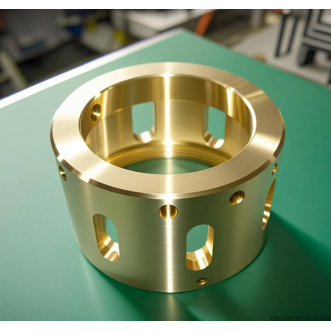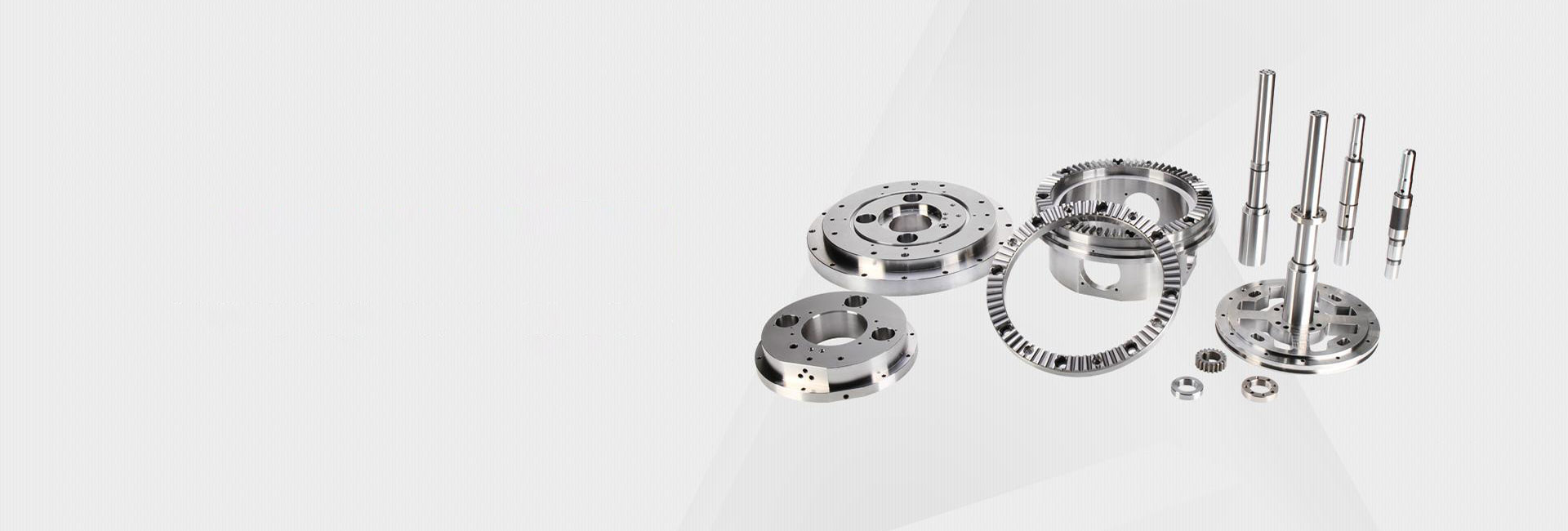الاعتبارات الرئيسية لتصنيع الآلات CNC على نطاق واسع: دليل عملي
مرحبًا يا زملائي المهندسين والمتخصصين في المشتريات! 👋 هل تم تكليفك يومًا بتحديد مصادر أو الإشراف على مشروع تصنيع CNC واسع النطاق ، فقط لتجد نفسك تتعرق من المزالق المحتملة ؟ انت لست وحدك. التعامل مع قطع العمل الضخمة ليس مجرد نسخة موسعة من الآلات القياسية ؛ إنها لعبة كرة مختلفة تمامًا حيث يمكن أن تؤدي عمليات الإشراف الصغيرة إلى تكاليف باهظة وتأخيرات. دعنا نقسم الأشياء الأساسية التي تحتاج إلى الانتباه إليها لضمان سير مشروعك الكبير بسلاسة.

🛠️ التحدي الكبير: لماذا الحجم يهم حقا
أولاً ، دعنا نتحدث عن الفيل في الغرفة: الحجم والوزن الهائل للأجزاء. هذا ليس مكونًا متوسط الحجم. نحن نتحدث عن الأجزاء التي قد تتطلب رافعات فقط ليتم تحميلها على سرير الماكينة. يؤثر هذا الاختلاف الأساسي على كل ما يلي. يجب أن تكون أداة الماكينة نفسها ضخمة بما يكفي ، مع هيكل قوي لمنع الاهتزازات التي يمكن أن تدمر تشطيب السطح ودقته. لا يتعلق الأمر فقط بالعثور على آلة بمغلف كبير ؛ يتعلق الأمر بالعثور على شخص لديه العمود الفقري للتعامل مع الوظيفة.

🤔 اختيار الجهاز: إنه أكثر من مجرد صندوق كبير
لذا ، كيف تختار الجهاز المناسب ؟ من المغري البحث عن أكبر جهاز يمكنك العثور عليه ، لكن هذا لا يكفي. تحتاج إلى التعمق أكثر.
إليك بعض الأشياء التي أتحقق منها دائمًا:
• Rigidity and Power: The machine's frame must be super stiff. Any flexing under the weight of the part or the force of the cutting tool will directly translate into inaccuracies. A powerful spindle is also non-negotiable for effective material removal on a large scale.
• Table Load Capacity: Don't just look at the travel dimensions. Check how much weight the table can actually support. Exceeding this limit is a recipe for disaster.
• Thermal Stability: Large machines running for long periods generate a lot of heat. The machine's design should manage this heat to prevent expansion that throws off precision over time. The specific mechanisms some manufacturers use to achieve this can be pretty clever, though I must admit, the exact engineering behind the best systems is an area I'm still learning about.

✈️ الدقة والقياس: إبقائها مستقيمة وصحيحة
حسنًا ، لقد حصلت على الجزء الموجود في الجهاز. الآن ، كيف تحافظ على دقتها في مثل هذه المساحة الكبيرة ؟ هذا هو المكان الذي تصبح فيه الأمور صعبة.
• Achieving Uniform Accuracy: It's one thing for a machine to be precise in one corner. It's another to hold tight tolerances across a two-meter span. This involves the machine's geometric accuracy. You might find that a tolerance of ±.05mm is consistently achievable on a well-maintained large-format machine, but claiming this proves it's the best possible standard would be misleading. It perhaps suggests a well-tuned process, but many other factors are at play.
• In-Process Measurement: For critical dimensions, you can't just machine the part, unload it, and then check it. The part might distort once released. On-site measurement with portable tools is often necessary to make adjustments while the part is still secured.
📋 التثبيت والإعداد: مرحلة Make-or-Break
هذه ، في تجربتي ، واحدة من أكثر نقاط الفشل شيوعًا. قد يتسبب الإعداد الضعيف على جزء صغير في إلغاء مكون. يمكن أن يتسبب الإعداد السيئ في جزء كبير منه في حدوث انهيار كارثي.
القواعد الذهبية الخاصة بي للإعداد:
• Secure Clamping: Use enough clamps, and ensure they are positioned to counteract cutting forces without distorting the part. Sometimes, strategic support is even more critical than clamping force itself.
• Avoiding Distortion: Applying too much clamping force can bend a large, thin-walled part. The goal is to hold it firmly, not to twist it into shape. This requires a delicate touch and an understanding of the material's behavior.
• Proper Alignment: Before any cutting begins, you must ensure the part is square and level to the machine's axes. This initial alignment step is boring but absolutely vital. However, it's worth mentioning that even with perfect alignment, material stress relief during machining can sometimes cause movement, which is a nightmare to predict perfectly.
💡 العامل البشري والتخطيط
بالإضافة إلى الآلة والجزء ، هناك الفريق. غالبًا ما تكون عملية تصنيع جزء كبير منها عملية بطيئة ، وتستغرق أحيانًا عشرات الساعات. مهارة المشغل واليقظة أمران أساسيان. لا يقوم الميكانيكي الجيد فقط ببدء البرنامج والابتعاد ؛ يراقبون الأصوات والرقائق والظروف ، ويقومون بإجراء تعديلات دقيقة حسب الحاجة. علاوة على ذلك ، تختلف استراتيجية الأدوات للأجزاء الكبيرة. أنت بحاجة إلى خطة لحياة الأداة - يعد تغيير الأداة البالية في منتصف دورة المعالجة التي تستغرق 30 ساعة مهمة معقدة وتستغرق وقتًا طويلاً ويجب توقعها وليس الرد عليها.
من ملاحظاتي الخاصة ، غالبًا ما يتم تسليم المشاريع التي تتضمن مخزنًا مؤقتًا للأدوات غير المتوقعة ومراجعات الإعداد بشكل أكثر موثوقية. هذا الجزء الإضافي من التخطيط هو الذي يفصل العملية السلسة عن العملية المحمومة.
 دليل عملي لتصنيع الآلات الصغيرة باستخدام الحاسب الآلي: التكل
دليل عملي لتصنيع الآلات الصغيرة باستخدام الحاسب الآلي: التكل
 الدقة التصنيع باستخدام الحاسب الآلي لقطع النحاس الكبيرة: دلي
الدقة التصنيع باستخدام الحاسب الآلي لقطع النحاس الكبيرة: دلي
 ما التسامح يمكنك تحقيق مع نك النحاس بالقطع ؟ دليل عملي
ما التسامح يمكنك تحقيق مع نك النحاس بالقطع ؟ دليل عملي
 ما الذي تبحث عنه في مركز تصنيع CNC كبير لعقد العمل ؟
ما الذي تبحث عنه في مركز تصنيع CNC كبير لعقد العمل ؟


